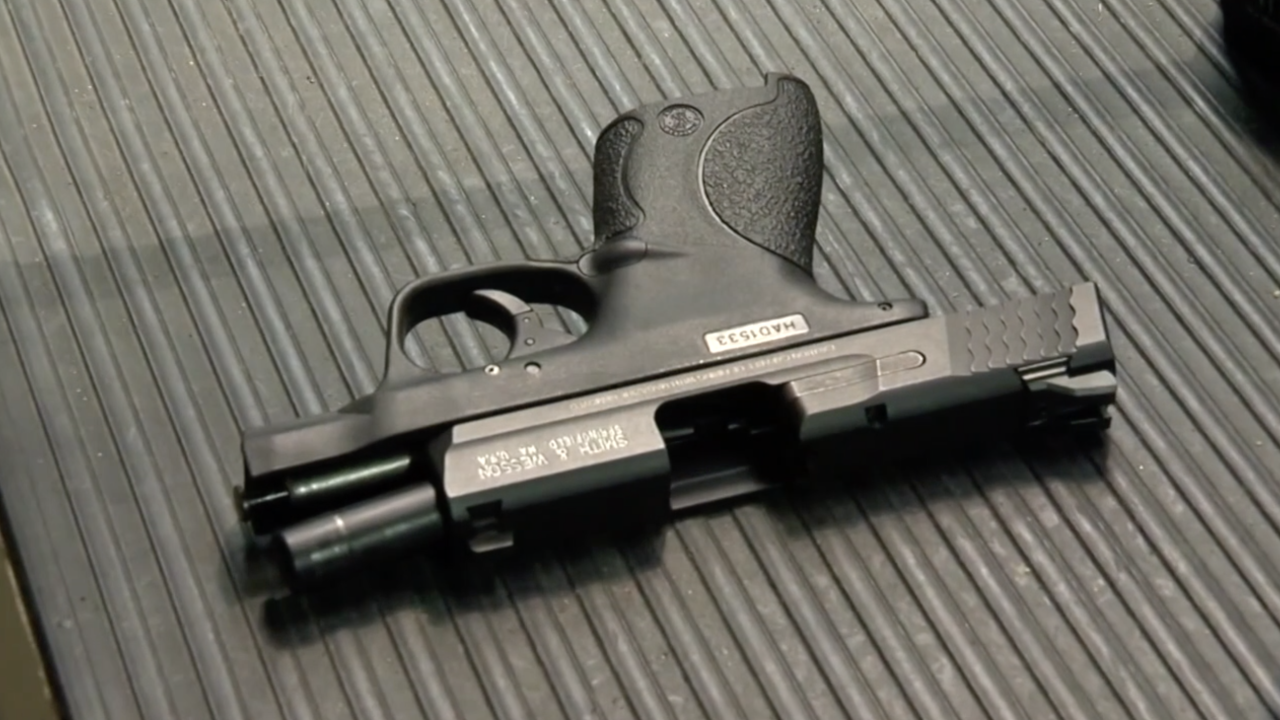A psychology professor is trying to understand real-world implications of potential misperceptions people wielding a gun could have.
“One of the reasons why unarmed people get shot might be that the people who are holding the gun literally misperceive that other person – the victim – as having a gun,” psychology professor Dr. Jessica Witt said.
Dr. Witt is a professor of psychology at Colorado State University. For more than a decade, she’s been researchinghow the mind can be impacted by holding a gun.
“What happens when you hold a gun?" Dr. Witt said. "What are the implications of holding a gun? How does that change how you see the world?”
To try and answer these questions, Dr. Witt's team collected videos and photos of people in different locations either holding a gun or holding a shoe.
“For each image that you see, you need to decide whether the person in the image is holding a gun or holding a shoe," Dr. Witt said. "If you see them holding a gun, you are to raise your hand and whatever object you’re holding and point to the screen. And if you see a shoe, you are to lower your arm and point to the ground. And what we did that was unique from previous research, was that we systematically manipulated whether the participant was also holding a gun or holding a neutral object.”
A neutral object like a spatula – using motion-tracking technologies. Dr. Witt says the idea is that holding a gun – which she says turns them into shooters – could change their ability to act. She wanted to find how these images look to shooters compared to when they’re holding a spatula.
“One of the metrics we looked at was their accuracy," Dr. Witt said. "And we found that when they saw a gun, they said it was a gun about 98% of the time so they were really good at detecting a gun when it was there. The question was, when they saw a shoe, what did they do? In that case, performance was still pretty high but not as high. So when they were holding a neutral object like a spatula, they said it was a shoe 93% of the time. But when they held a gun and they saw a shoe, that’s when we saw the most errors. So they had the hardest time identifying when the other person was not holding a gun when they also held a gun.”
Dr. Witt says they also found a similar pattern with reaction time. Reaction time took the longest when a participant saw a shoe and was holding a gun.
“So it was as if holding a gun made their visual system make them want to see a gun there and they had to inhibit that response which took time and resulted in slower responses," Dr. Witt said. "And if they didn’t inhibit that it then resulted in more errors.”
Jacob Paulsen is the president of concealedcarry.com. He’s been a firearm instructor for 13 years.
“Concealedcarry.com is a national resource for American gun owners who feel compelled to defend themselves and their loved ones from violent threats,” Paulsen said.
After reading about the study, he agrees the topic is worthy of research.
“It’s believable that someone who’s carrying around a gun might be more likely to infer that when they face a dangerous situation -- that the person that they’re facing might be holding a gun versus some other object," Paulsen said. "That would seem logical on the surface.”
However, in the study, the method was tested on university students. Paulsen says the study should be expanded to gun owners and people in gun-wielding jobs.
“If we want to draw some sort of conclusion based on what law enforcement is likely to find based on some sort of cognitive bias, then it would make sense to conduct the research with law enforcement officers," Paulsen said. "Similarly, if we’re trying to determine if the average concealed carrier out there walking around with a concealed gun whether they are experiencing some sort of cognitive bias, then the research should probably be conducted with that consumer group.”
Dr. Witt says she also wants to expand the study. In fact, she has a grant under review with the National Science Foundation. Her goal is to understand if some people are more protected from these errors and if others are more prone to them. With more data, perhaps training programs and hiring practices could be developed to prevent the errors. As a gun owner himself, Paulsen says training is super important.
“We need to remember that the second amendment of our constitution gives us the right to keep and bear arms as a citizenry," Paulsen said. "However, with all rights comes a certain degree of responsibility so the onus is on us – the gun owners – to seek out and receive as much training as we practically and conceivably can in order to minimize potential risks that also come with gun ownership.”




